The North Shore has always been a special place for the people who live and visit here, but this year, the impact of individual neighborhoods and communities feels more important than ever. As we all endure weeks and months of isolation and social distancing, North Shore residents have found a renewed appreciation for the comfort and beauty of their own neighborhoods, whether they are rediscovering neglected walking paths or exploring nearby places for the first time.
Things we’ve perhaps taken for granted—a favorite restaurant or shop, playground, or hiking trail—have been imbued with new meaning and importance as we long to get our lives back to normal. As we celebrate a few of those neighborhoods in this issue, we also invite you to reflect on what you love about your own neighborhood and show your appreciation for this wonderful place we call home.
Downtown Reading
Photographs by Doug Levy
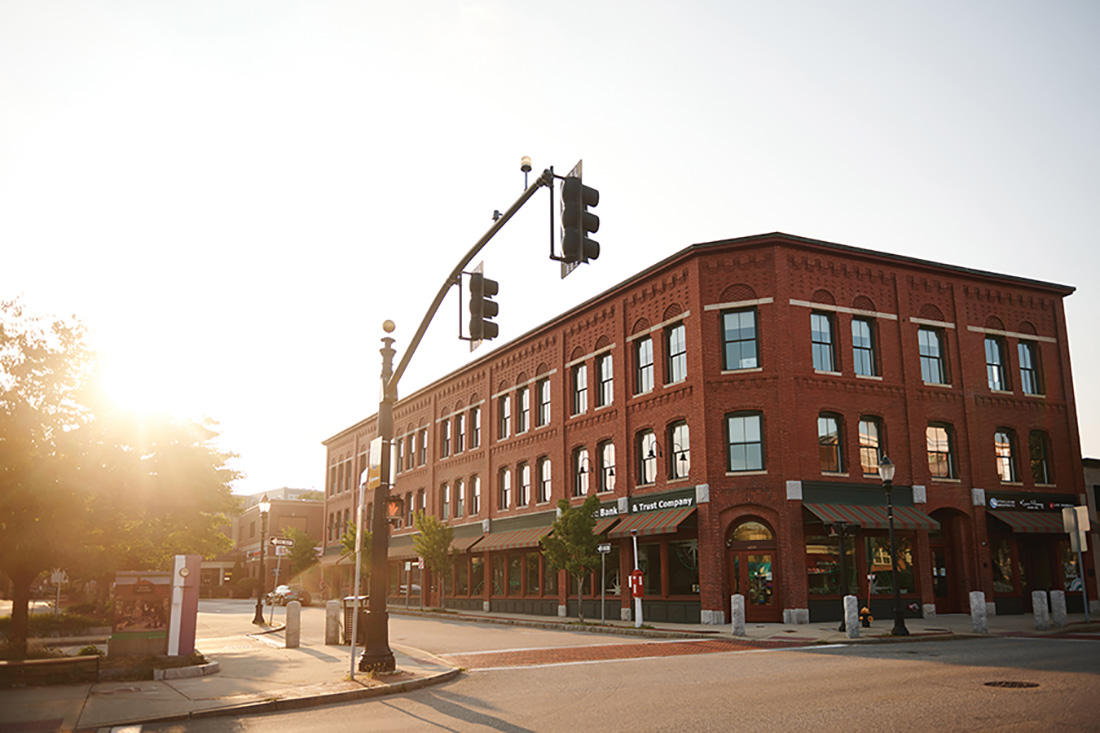
Perhaps when Liz Whitelam, owner of the independent Downtown Reading bookstore Whitelam Books, looks back on these months when COVID-19 interrupted business as usual, she’ll remember lots of windows.
There were the backseat car windows that customers rolled down to let Whitelam pass book orders through for curbside pickup. There were the kids, hands pressed against their living room or kitchen windows, who greeted Whitelam with, “Yay, the book lady is here!” when she arrived at their doorstep to deliver books, puzzles, and games. And there were the hand-lettered inspirational quotes and positive affirmations on downtown Reading shop windows—written on the glass by Reading artist Antea Amoroso of Antea Amoroso Design to spread positivity and cheer. The message on the window at Whitelam Books reads, “Reading gives us somewhere to go when we have to stay where we are.”
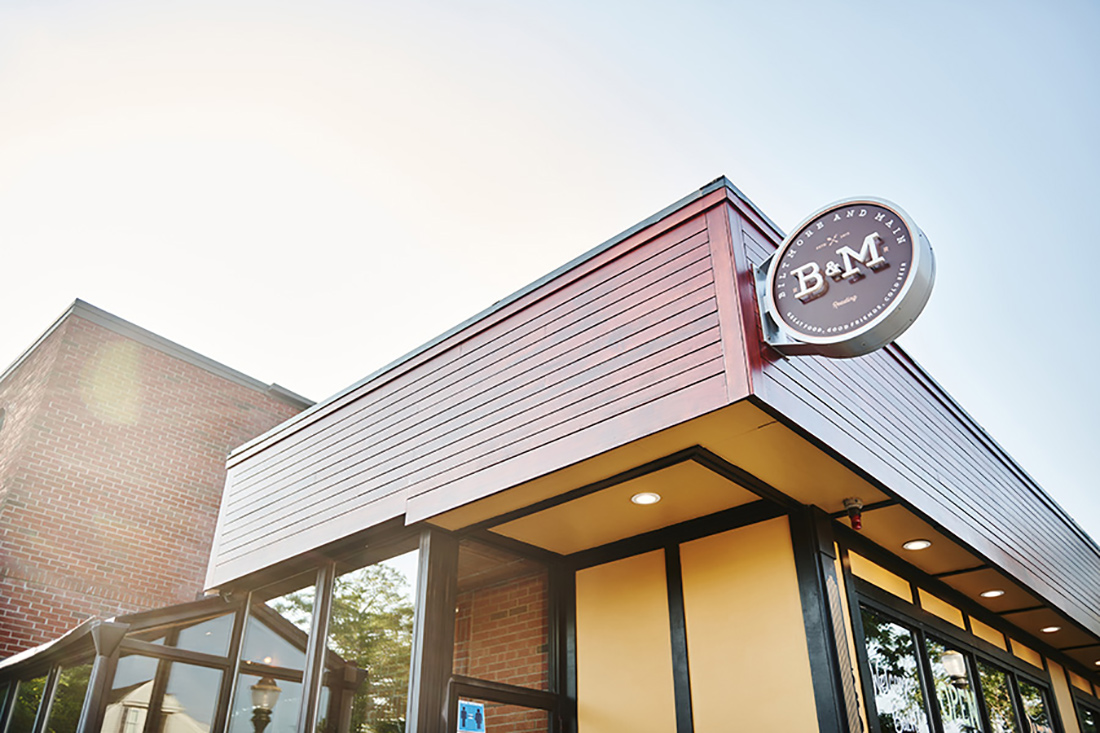
The COVID-19 pandemic has wreaked havoc on many small local businesses and downtowns, but Whitelam says she’s been thankful for the support that Reading residents and the town itself have shown for local downtown businesses throughout the crisis. She says from the very beginning, residents were sharing online messages of encouragement and reminding each other to shop locally and support local businesses.
“Part of the zeitgeist here is supporting the Shop Local movement,” Whitelam says. “It was comforting knowing going into this that this is how we are as a community.”
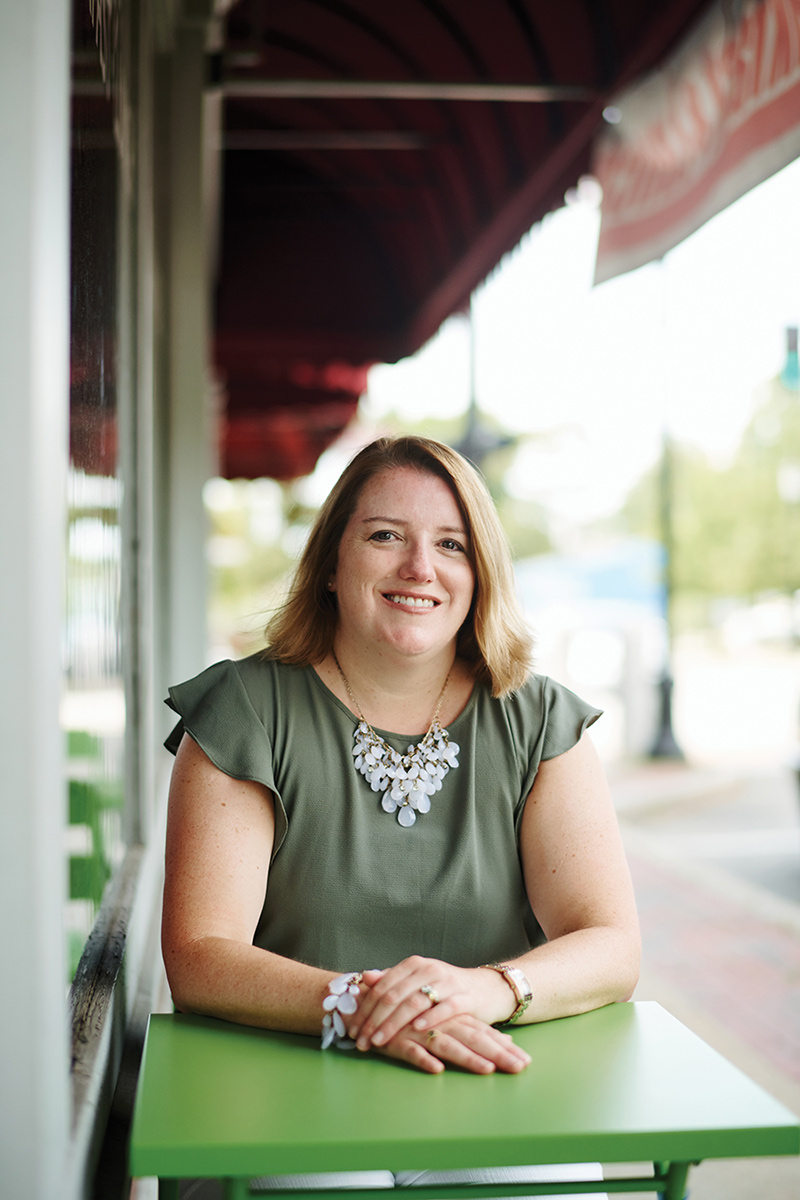
Such a zeitgeist makes sense, given the transformation that the downtown Reading neighborhood is currently undergoing. Earlier this year, Northshore magazine reported on the ReImagine Reading Downtown initiative, which Erin Schaeffer, Reading’s economic development director, described as an effort “to create a downtown organization, and that organization is created in partnership with the town.”
The support for downtown businesses during the pandemic has extended to eateries, too, with the town and the Reading-North Reading Chamber of Commerce partnering to provide eight sets of bright-green sidewalk bistro tables and chairs, allowing coffee shop and restaurant patrons to meet a friend outside with their takeout.
“We recognize that many restaurants and businesses are struggling,” says Lisa Egan, executive director of the Reading-North Reading Chamber of Commerce. “People like the fact that we have a walkable downtown…so we wanted that to continue, especially now with so much uncertainty.”
Downtown Beverly
Photographs by Elise Sinagra

For Zhana Levitsky, owner of Yes, Wolf Spirit and Yes Art Space in Beverly, there’s a lot to love about Downtown Beverly—the supportiveness of the city and chamber of commerce, the art spaces and artists, the food, proximity to the beach, Lynch Park, Larcom Theatre—but there’s something else, too, something less concrete that always catches her attention.

“The one thing I’ve always loved about Beverly is that you see pedestrians that are walking for pleasure,” she says. There’s a youthfulness to the city, of course, thanks to Montserrat College of Art and Endicott College, which certainly contributes to that “out-and-about” vibe, but more than that, Levitsky thinks it’s a sign of a healthy, dynamic downtown.

That’s fitting, since downtown Beverly is undergoing a change that has walking at its heart. Cabot Street is in the midst of a revamp, dubbed the Cabot Street Project, which aims to make the stretch of Cabot from Winter Street to Abbott Street more pedestrian friendly, with wider sidewalks, sidewalk bump-outs, new trees, and ornamental street lighting.
Ashley Springett, an educator at Salem Academy Charter School, who’s also a certified personal trainer and group fitness instructor at the Greater Beverly YMCA and runs the fitness and wellness company Sol Fit, agrees, saying she enjoys living in “close proximity to places I love.”
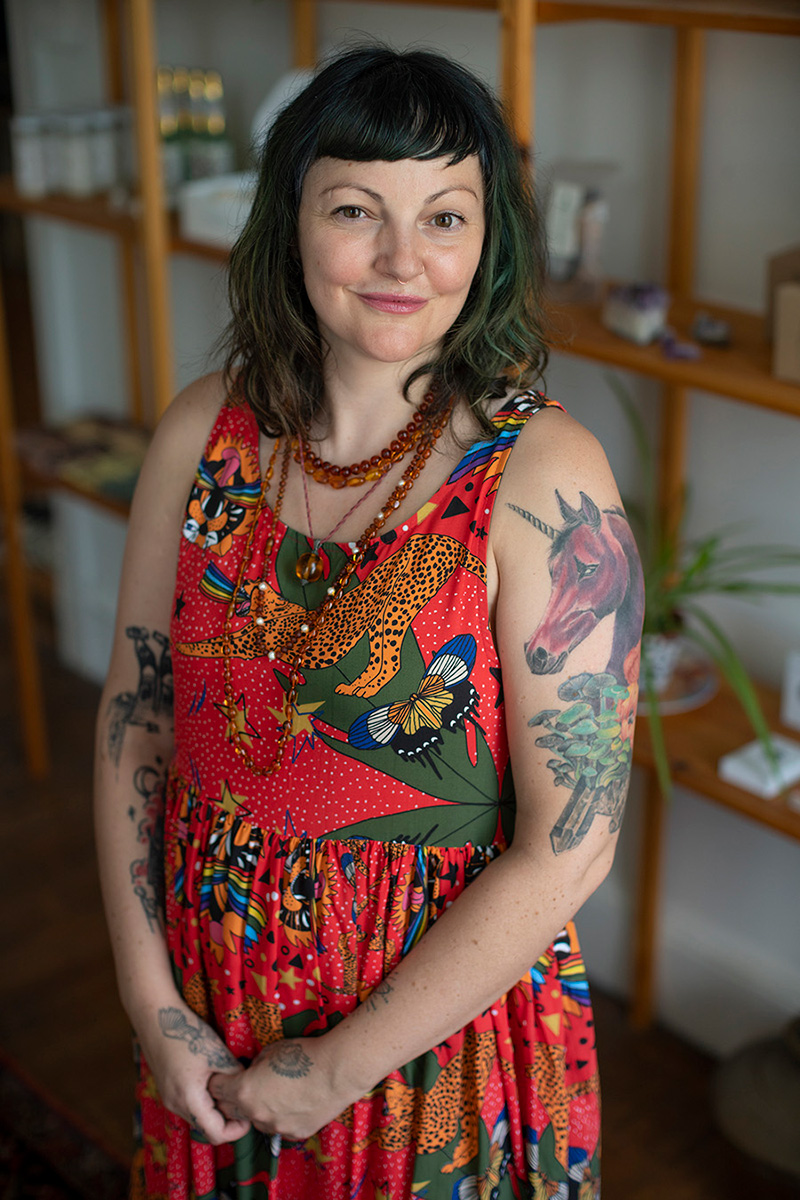
“I live in the Downtown District, which means I can very easily walk to various restaurants, shops, and conveniences on Cabot Street, the public library or the Beverly Common on Essex Street, and just a few blocks to Dane Street Beach!” Springett says. “With Montserrat College of Art so close by, the neighborhood feels youthful, vibrant, and diverse, and I have really enjoyed being close to various events.”
Downtown Beverly also feels creative, not only in the artistic sense—although there’s certainly plenty of that—but also as a place that’s constantly growing, changing, and pushing itself to improve and expand, all while people are “holding are one another up and supporting each other” without competition, says Levitsky.
“What I love is that people will graduate from local colleges and instead of moving away, they’ll settle down and open businesses in downtown Beverly,” she says.
There’s also a sense of independence downtown that’s refreshing.

“I think people actually really care about the flavor of, and the quality, and just the niche offerings that are housed in downtown Beverly,” Levitsky says. “You have independent arts businesses, where people are able to sell their own products with a storefront. That’s so encouraging. You don’t get to see that a lot.”
Downtown Lynn
Photographs by Jared Charney
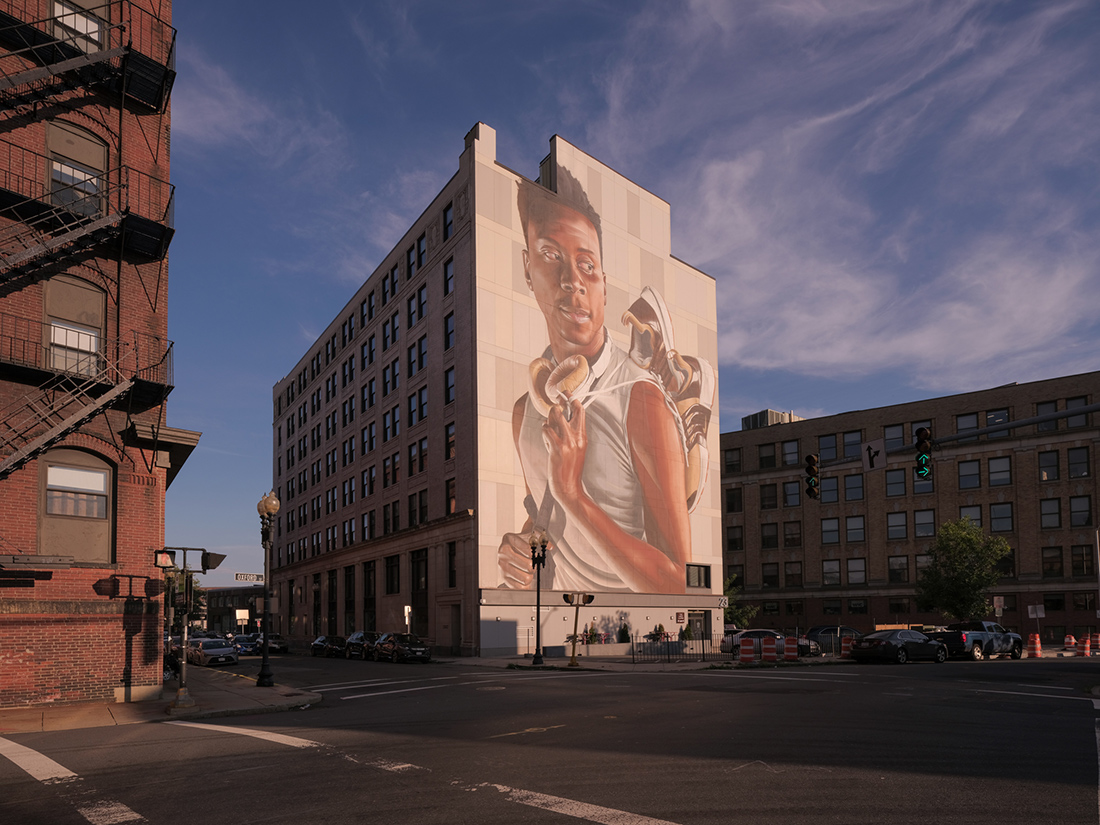
Whether or not you grew up on the North Shore, chances are you know the famous little rhyme that begins, “Lynn, Lynn, the city of sin.”
While Lynn may have shed its “sin city” reputation, there is more than a bit of truth to the next part of the rhyme: “You won’t go out the way you came in.”
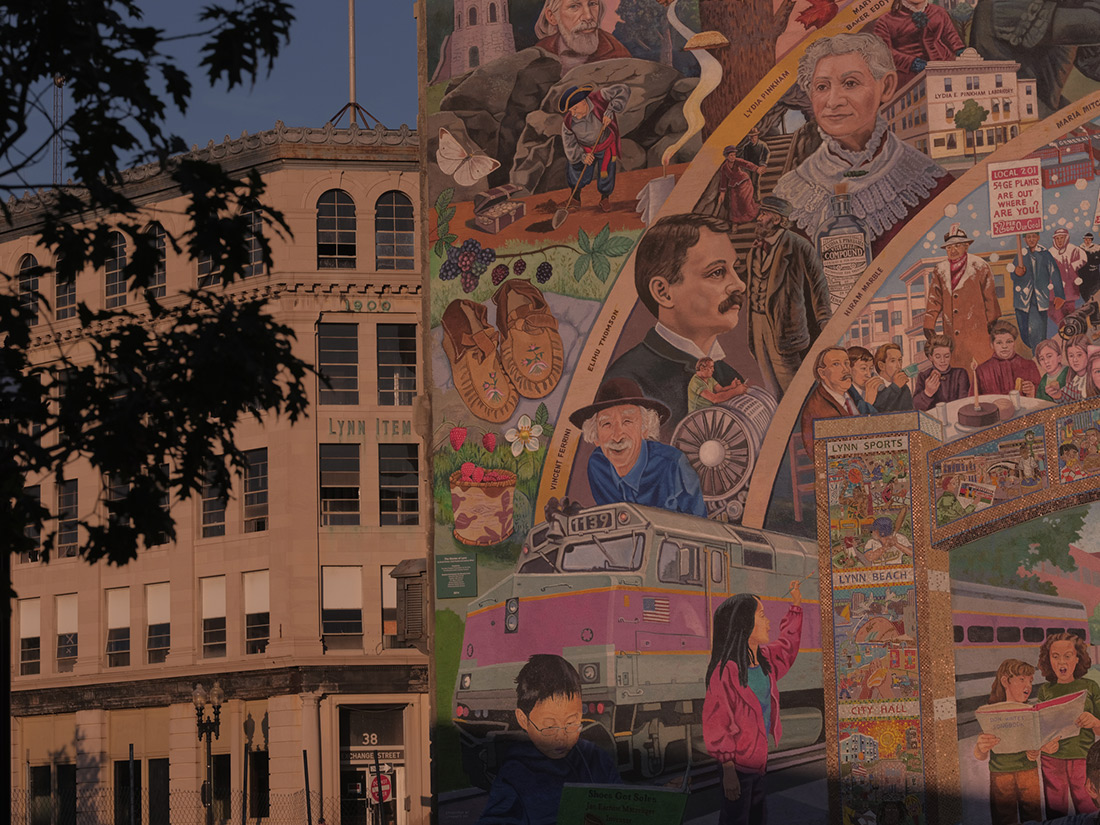
In fact, it’s so true that the Downtown Lynn Cultural District has adopted this line as its motto. “I think one of the most brilliant things is that the Cultural District changed its motto to ‘You won’t go out the way you came in.’ It’s putting that positive spin on it,” says Carolyn Cole, Lynn’s Cultural District coordinator. “There’s a community pride…people who are from here are from here, and they are proud to be from here.”
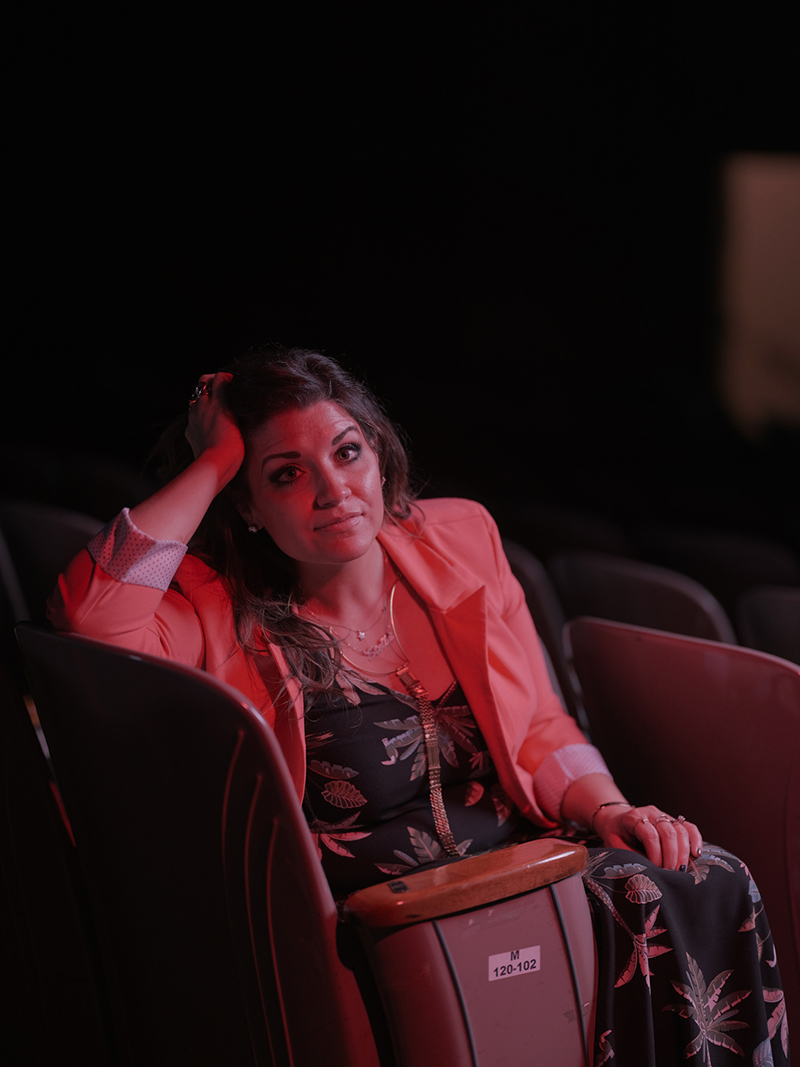
That’s because there’s a lot to be proud of in Downtown Lynn, which is alive with art, activity, and, most importantly, diversity. Cole notes that roughly 45 languages are spoken within Lynn public schools and almost 70 percent of downtown businesses are women- and minority-owned.
“That’s who we are, and that’s our biggest asset,” she says.
Lynn-based author, entrepreneur, and self-care advocate Vick Breedy echoes that appreciation for diversity.
“You can see anybody and everything out there,” she says. “In some communities you can be kind of protected in a bubble, not really know what’s going on, or see what’s going on, or see other cultures, or even other income levels than yourself, but in Lynn you have all of that.”
Another highlight of downtown Lynn is its food scene.
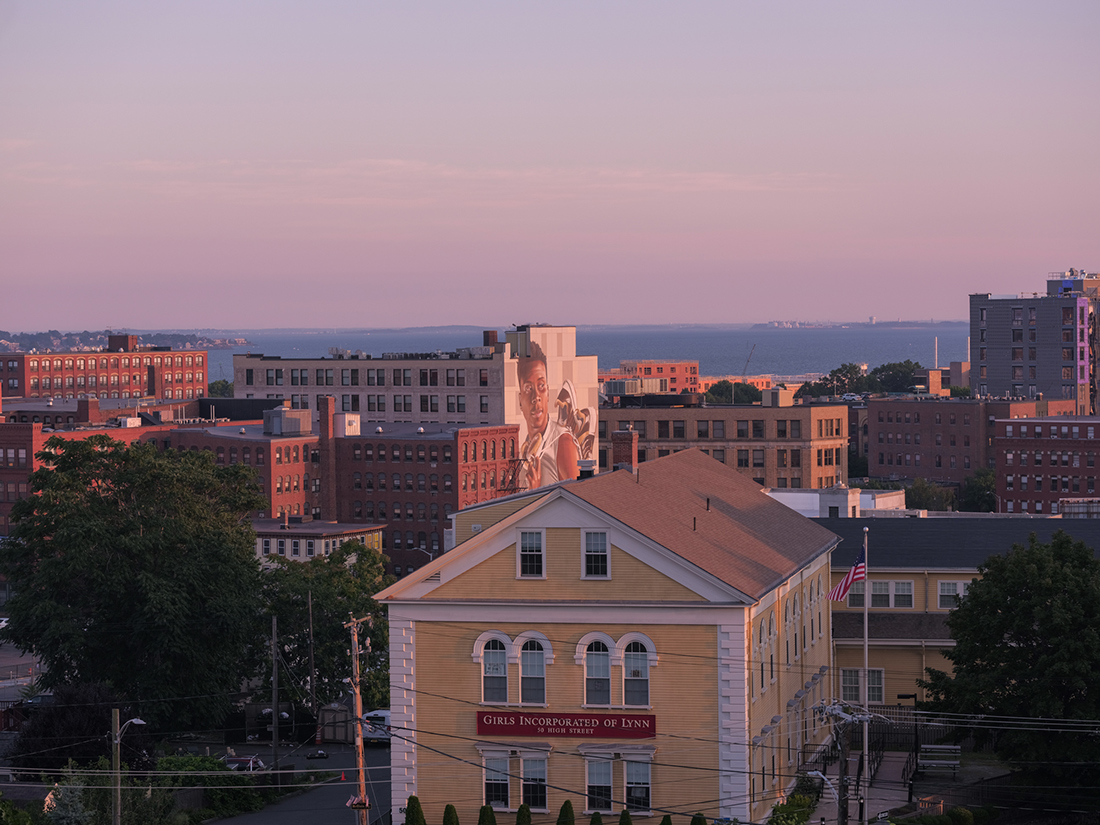
“We basically have an international food row,” says Cole. “We could do an international food festival within a two-block radius.”
You will also find incredible architecture, history, and outdoor art, including many impressive murals (“if you give us a barrier, we’re going to paint it,” Cole says), not to mention a warm, inviting, and supportive community that “puts the ‘public’ in public art.”
More than anything, Cole wants people—even those who’ve called Lynn home for many years—to give downtown a closer look.
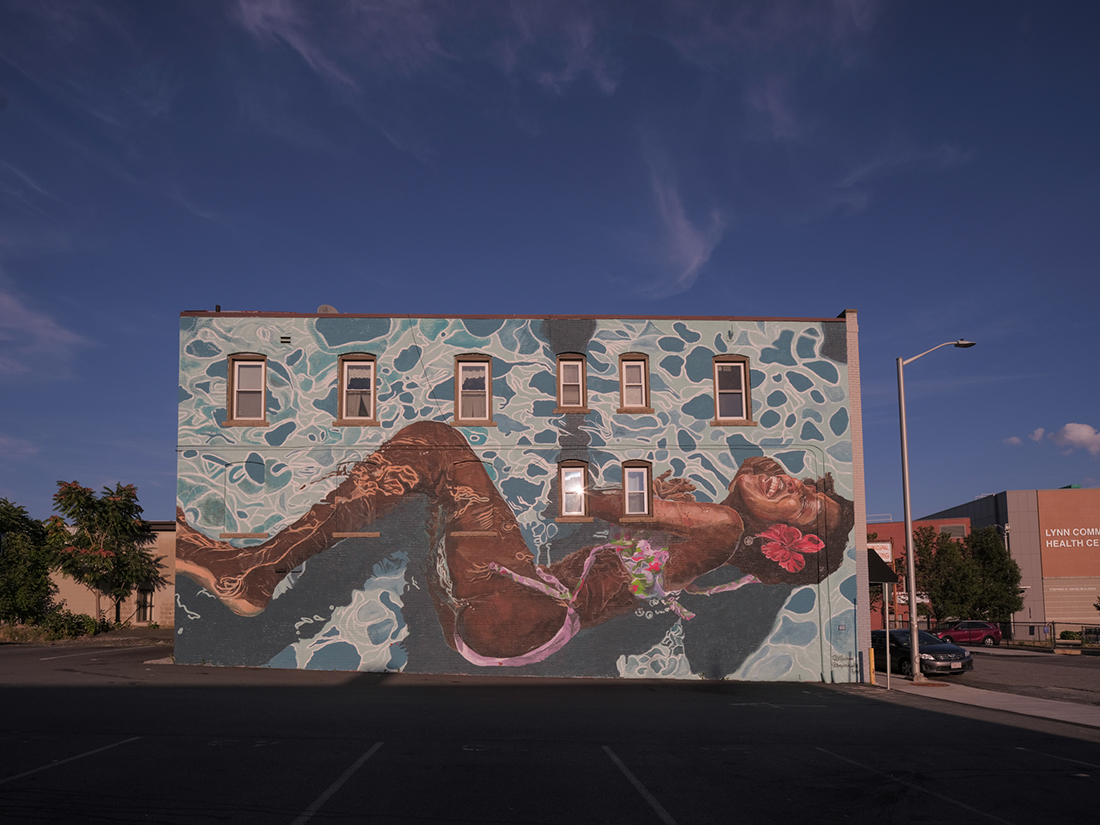
“We’re so much more than a song,” she says. “We’re so much more than a reputation.”
Ipswich’s East End
Photographs by Jared Charney
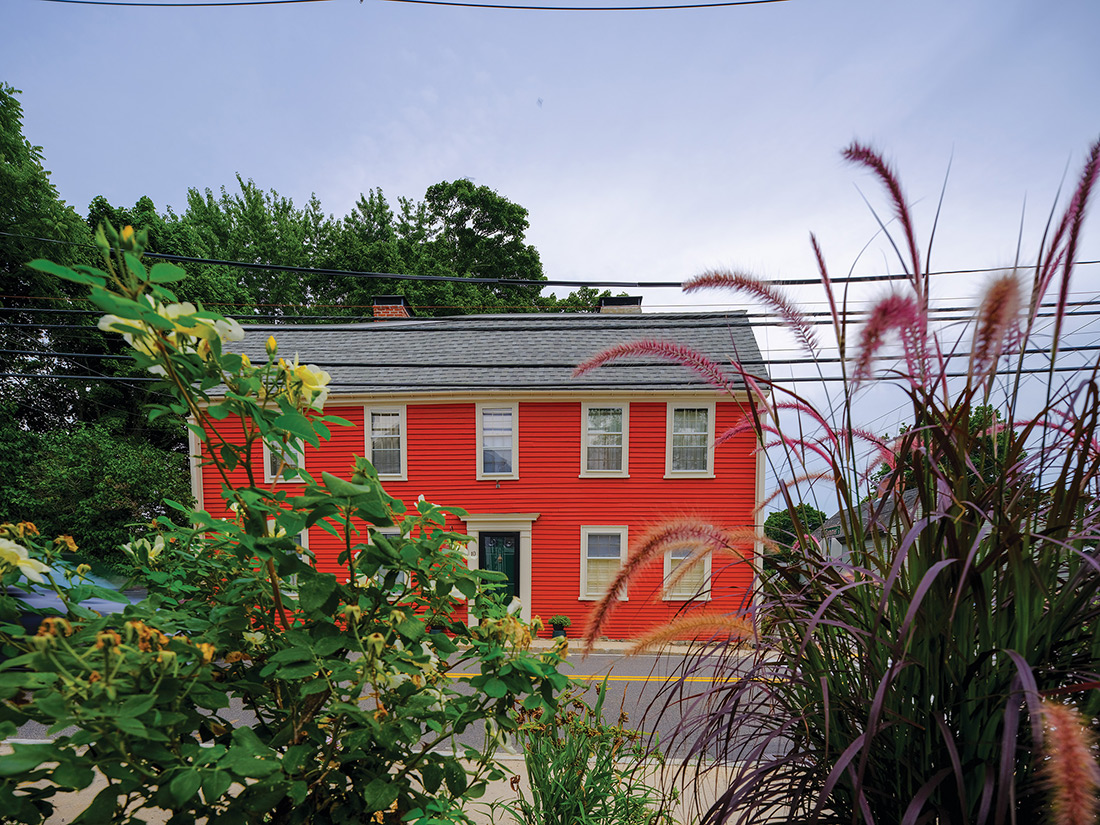
Ipswich has more First Period homes—houses built during the colonial period from 1626 to 1725—than any other town in the country, and perhaps there’s no better place to see them than in Ipswich’s East End neighborhood.
That’s why when town historian and chairman of the Ipswich Historical Commission, Gordon Harris, leads his historic walking tours through town, the East End comprises two-thirds of what he likes to show people.
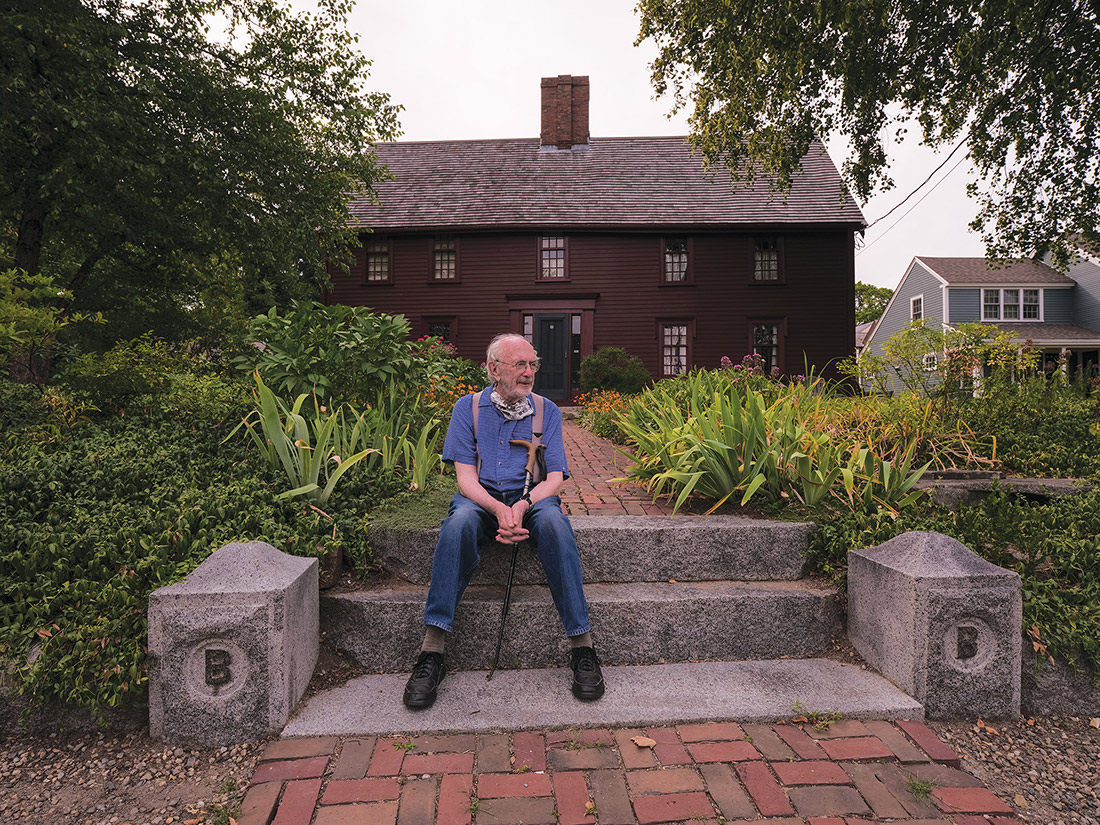
“You don’t see that in other places,” he says of the architecture. “You don’t see houses that were built in the 1600s and the 1700s.”
The East End was “traditionally kind of a working-class area” for those employed in the maritime industry, Harris says of the neighborhood’s history. But unlike Ipswich’s downtown, it’s “a little off the beaten path. It doesn’t have a highway running through it,” he says. “The East End is really the calmest and most easygoing part of Ipswich.”
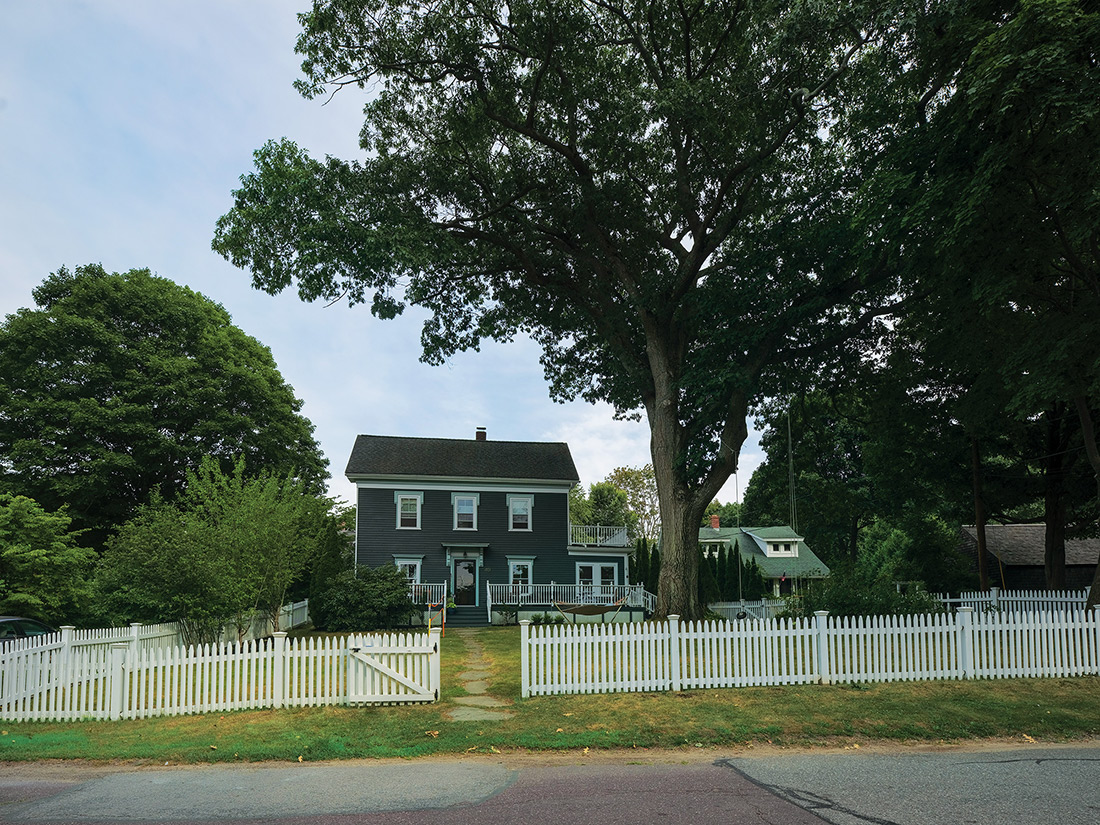
Situated along the Ipswich River, the East End offers lovely places to stroll for those who venture away from downtown, like Turkey Shore Road. There’s also the Green Street Bridge, a double-arch stone bridge that may not be the town’s most famous or the country’s oldest—those distinctions go to the town’s Choate Bridge—but is the one that Harris thinks is the “most beautiful.”
All that history doesn’t detract from what’s really special about the East End, though: the people who live there and who treasure and preserve the homes and history that are still stitched into the fabric of their daily lives.
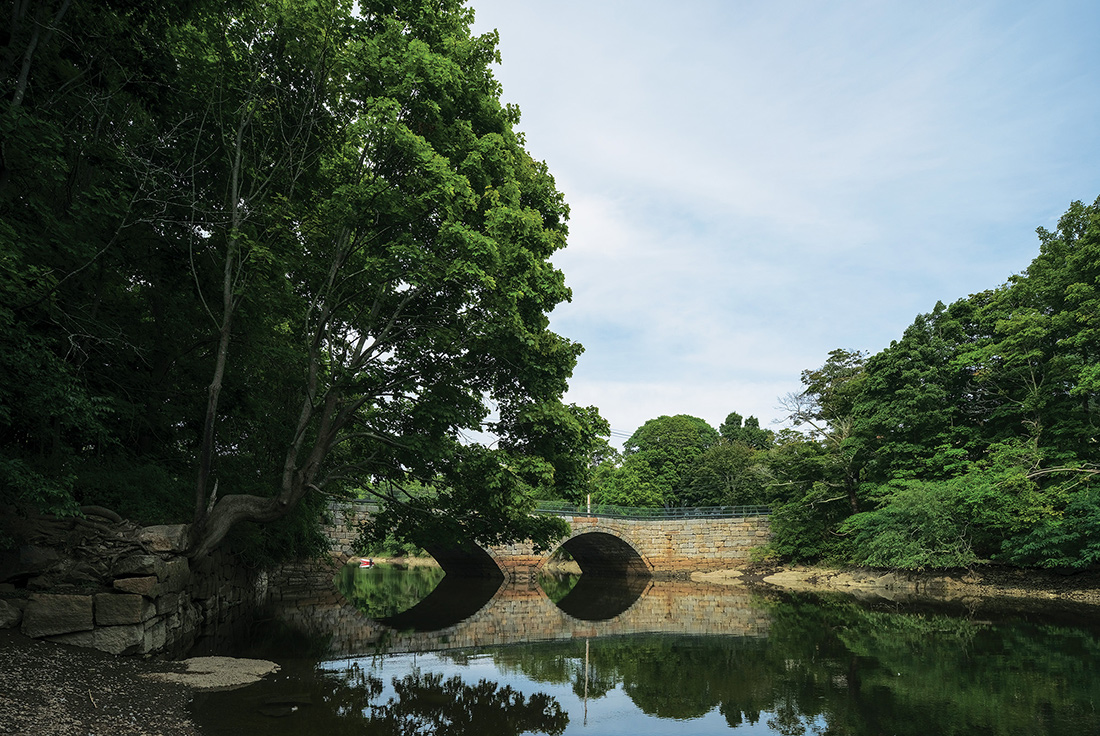
“Ipswich isn’t really a tourist town…. It’s a town where people live,” Harris says. “A lot of people have roots.” Harris notes one man who still lives in a house that was built by his four-times-great-grandfather, a house that has never been sold.
Harris also says it’s a creative community, home to lots of artists and photographers. In fact, there’s typically (in non-COVID times) an annual East End Open Studio tour featuring the work of East End artists.
“You’re in a place where people really have a sense of belonging,” Gordon says. “I never felt I belonged anywhere until I lived here.”
Plum Island
Photographs by Rachael Kloss
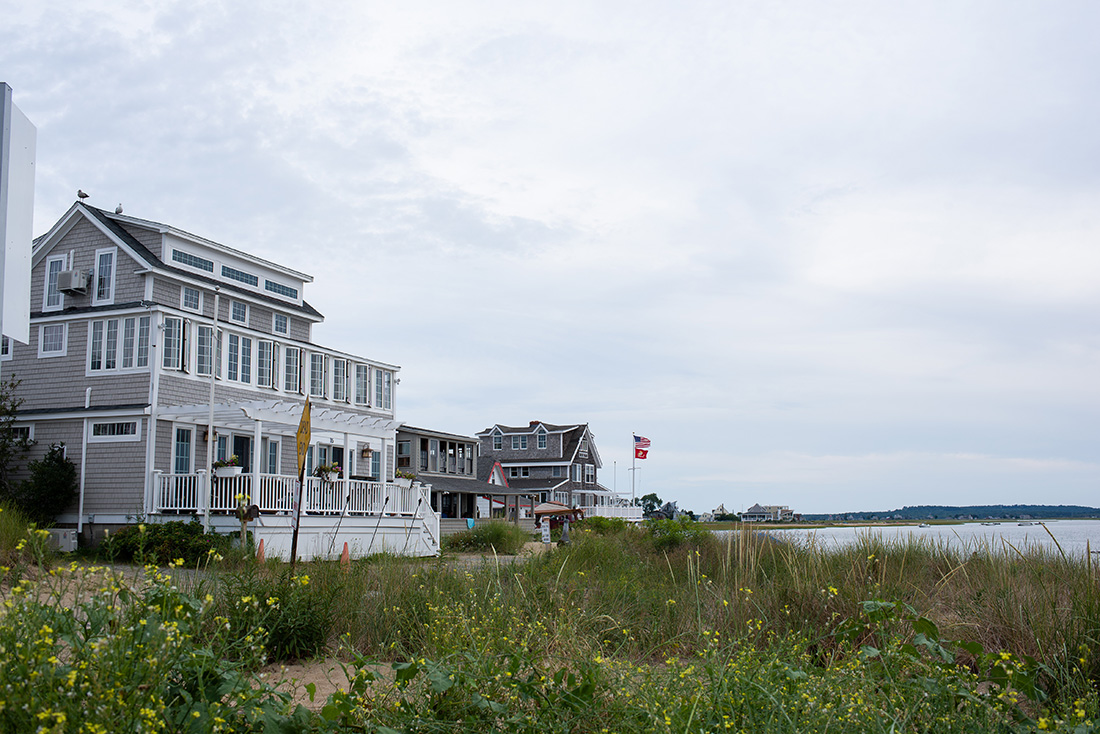
For a narrow, 11-mile barrier island, Plum Island packs a punch. There’s the Parker River National Wildlife Refuge, a 4,700-acre expanse of wild land that protects migratory birds—most notably the piping plover—and consists of an incredible array of habitats, including, according to the U.S. Fish & Wildlife Service, a sandy beach and dune, a cranberry bog, a maritime forest and shrub land, a freshwater marsh, and a salt marsh.
There’s also a boutique beachside hotel, Blue Inn on the Beach; the beautiful Plum Island Lighthouse, built in 1788; the historic Plum Island Airport; fantastic restaurants; and even a boutique, Plum Island Soap Company, which creates handmade small-batch soaps and skincare products right on the island—not to mention sandy beaches and tucked-away spots like the idyllic Sandy Point State Reservation.
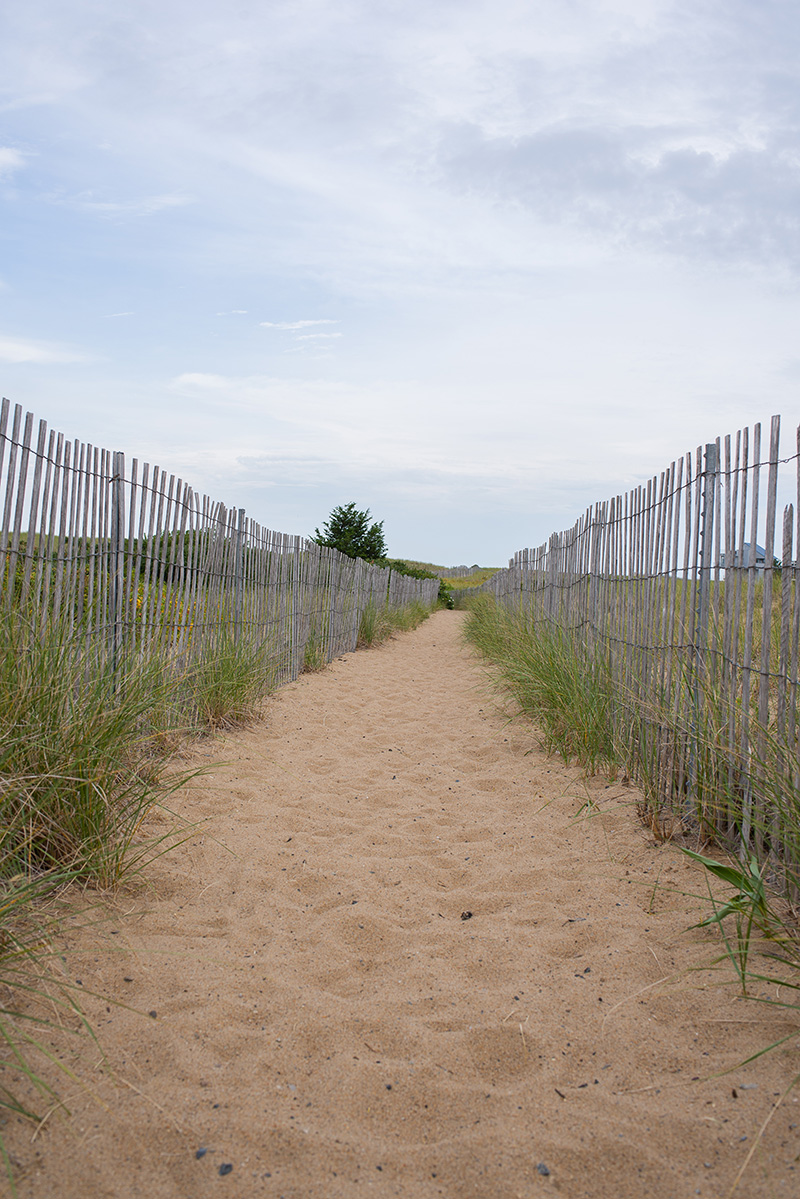
All of these attractions make Plum Island a favorite spot for tourists, birders, and local day trippers, but Plum Island is also a neighborhood unto itself, a place where people live year-round, not just for the summer.
One of those people is Kim-Soo DeLibero, a teacher and co-owner of the beloved Plum Island restaurant (and perennial BONS winner) Bob Lobster, who lives on Plum Island between the basin and the ocean with her husband and Bob Lobster chef, Brad DeLibero, and their two small children. It’s where they met and got married, as well.
“In addition to being a beautiful place—it has some of the best sunrises over the ocean and sunsets over the basin that I’ve ever seen—the people who live here are awesome!” she says. “I didn’t grow up here and never lived in such a friendly community. Whenever we go out for walks around the island, everyone smiles and says hello. It’s a small community so you get to know the locals pretty quickly. Plum Island has such an easy, laid-back vibe because of the people who live here. That makes it a really special place to be.”
It’s also a place that’s refreshingly comfortable with change, and perhaps that’s fitting for a barrier island that itself is constantly shifting with the tides. That’s true for Bob Lobster, too, which retains beloved menu items like the classic lobster roll and Joyce’s Fish Chowder, but has added its own, new spin.
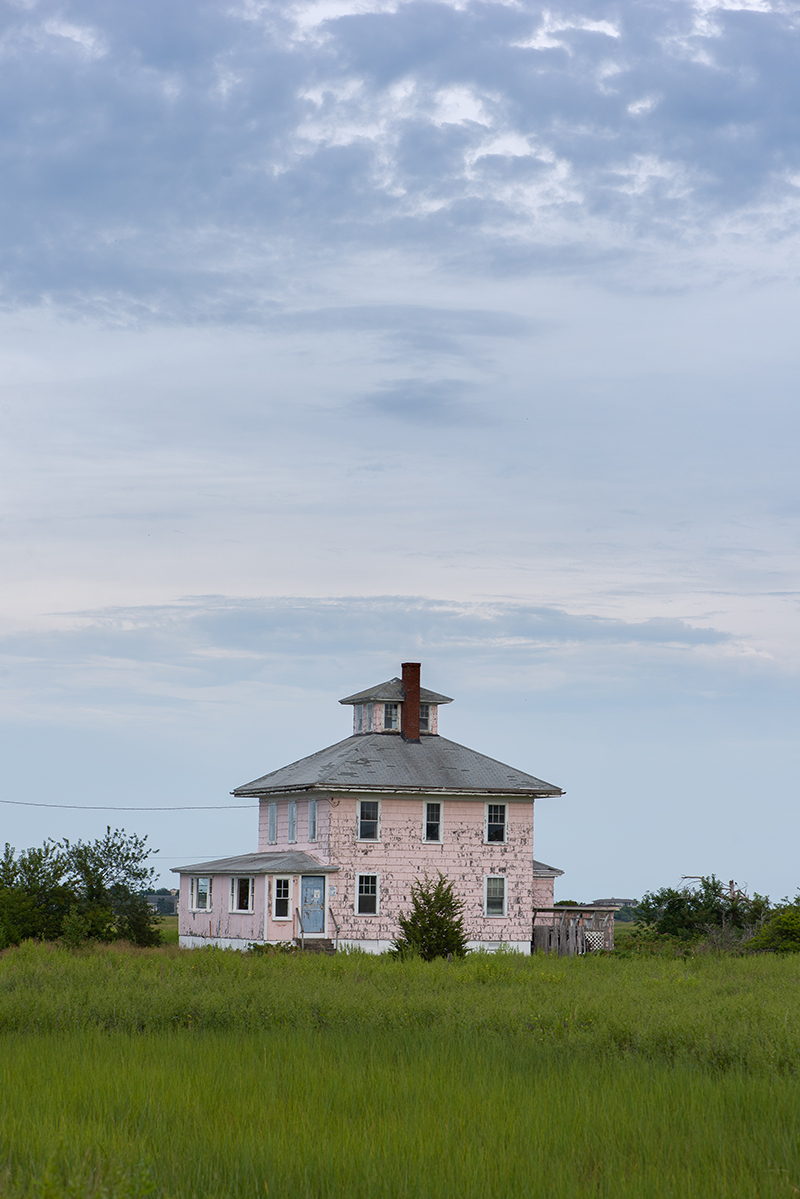
“Chef Brad definitely made the menu his own with our specialty lobster rolls, lobster poutine, homemade chowders like the lobster corn chowder, and his super delicious specials that you probably wouldn’t expect to find at a little New England seafood shack,” DeLibero says.
Change is the norm elsewhere on Plum Island: Blue The Inn on the Beach was once the site of the former Walton’s Ocean Front Inn; the island was once home to Camp Sea Haven, a summer camp for children with polio and other disabilities; and you’re as likely to see yoga and drum circles on the beach as anglers and paddleboarders.
“I love the quietude, and also that it’s ever changing,” says Sarah Oleson, owner, instructor, and international retreats leader for Sarah Oleson Yoga, LLC. “Moment to moment, I think the island is changing.”
Although Oleson leads yoga retreats all over the world, Plum Island holds a special place in her heart. She worked for 15 years at Plum Island Grille and met and married her husband on Plum Island. Now she leads full-moon yoga and drum circles, as well as weekly yoga classes, on Plum Island Beach.
“There lies a lot of peace there for many different reasons,” she says. “I feel that as soon as you drive onto the island, it’s this moment of, “Ah, everything is going to be ok…I’m home.”
Annisquam, Gloucester
Photographs by Joe Ferraro
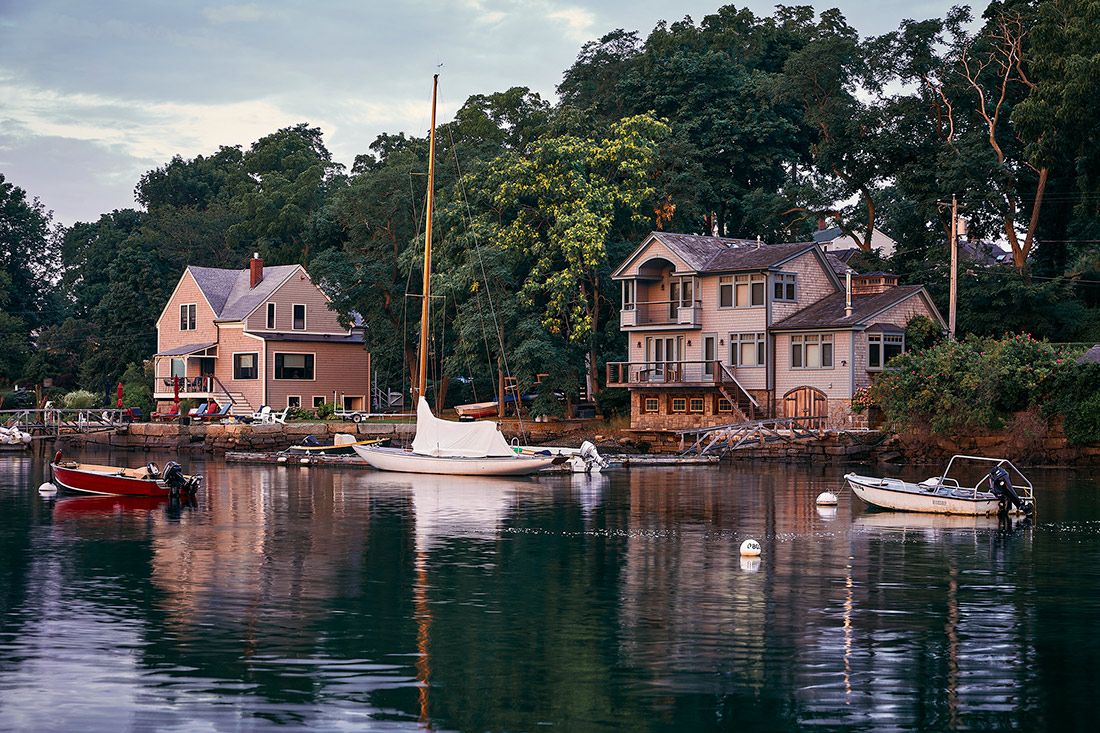
Most of Cape Ann is a tourism hotspot, especially in the summer. But there’s at least one little corner that retains a residential village feel: Annisquam, a neighborhood in Gloucester.
“We’re a very picturesque community and also a small one,” says Steve Harris, president of the Annisquam Village Hall Association. There are small streets, almost no parking lots, only one restaurant, and one store. “It’s not a place that we can pack a lot of tourists in.”
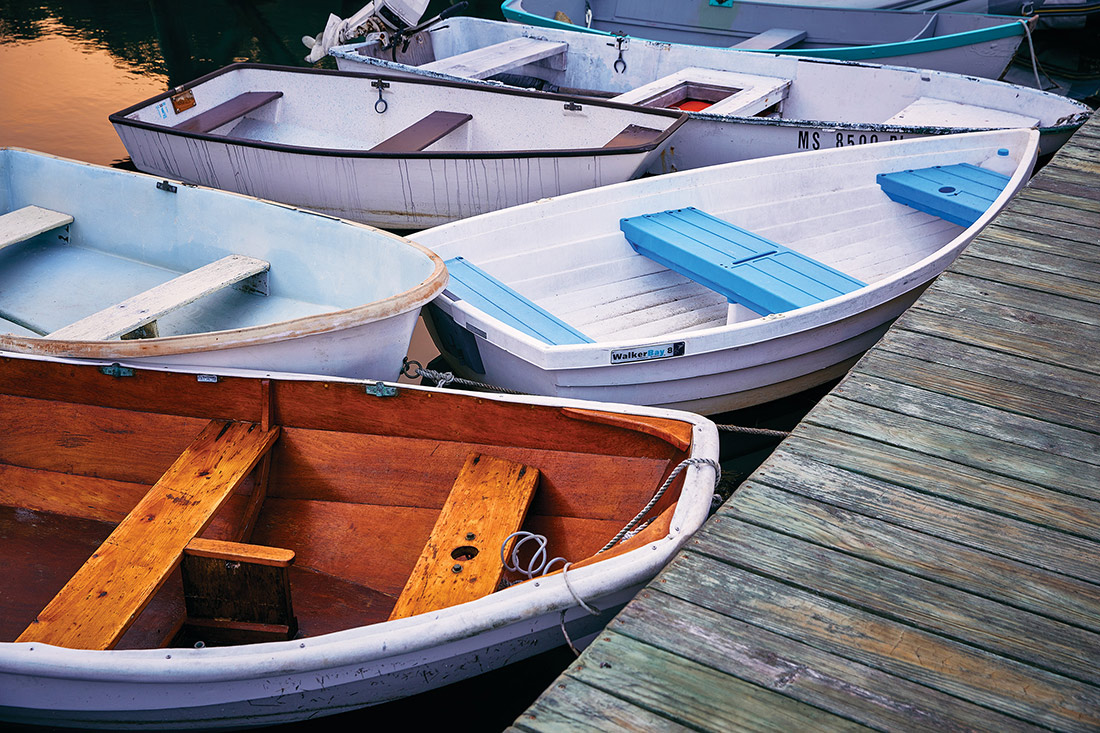
It’s even small geographically, a tiny, rocky spit of land surrounded by “ocean, river, and cove,” says lifelong resident Gerry Herbert. She says she loves walking the narrow streets, and granite steps, and past historical buildings that she “knew as a child 80 years ago [that] are cared for and cherished by their current owners.”
Because it’s so small and relatively out-of-the-way (it’s a peninsula), Annisquam, from an Algonquian term meaning “top of the rock,” feels a world away from the rest of the city to which it belongs. Despite being part of Gloucester, it still feels like a place unto itself.
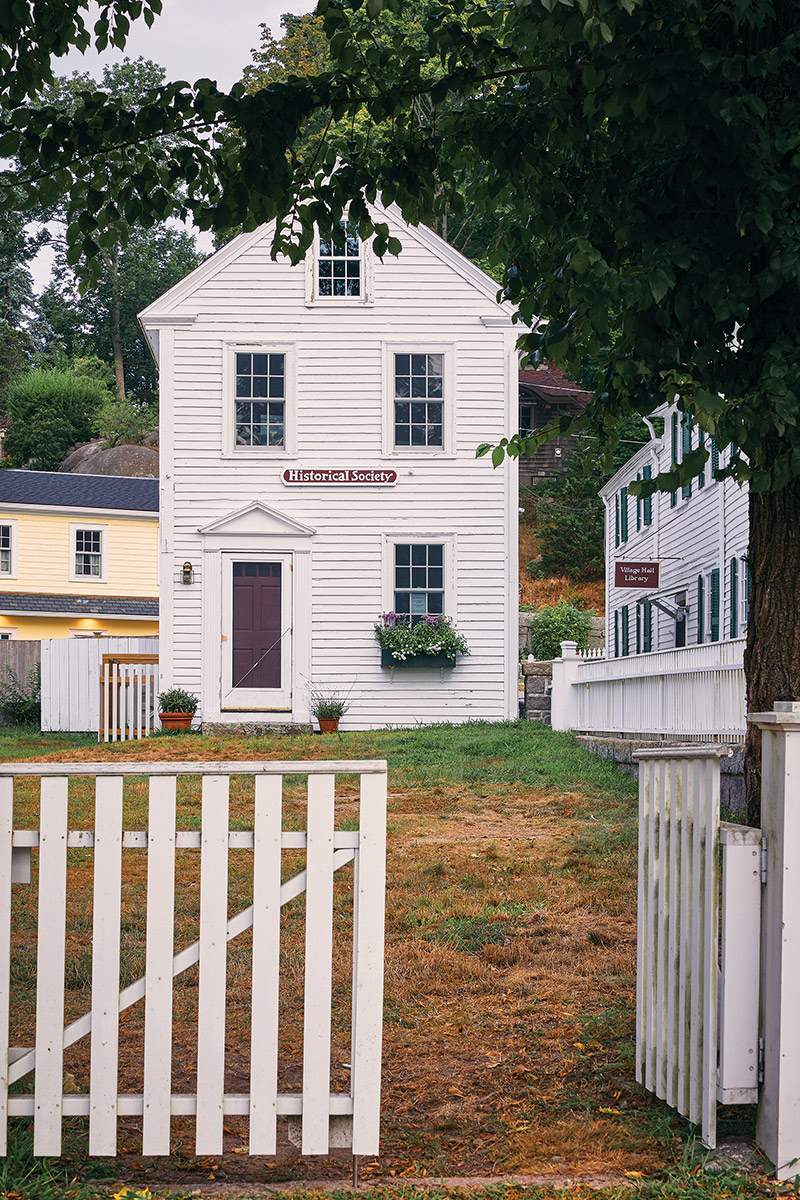
“What I love most about Annisquam is its sense of village. Everyone looks after each other, regardless of age or persuasion,” says Dave Tearce, another lifelong resident. “This is a place to come back to. Residents have known each other for 70 years or more through several generations of families.”
Although it’s not a tourist area, Harris says those who do want to spend an afternoon in Annisquam might enjoy exploring some of what the Annisquam Village Hall Association has to offer, including the Village Library and the Historical Society, housed in an old firehouse, as well as a consignment shop called The Exchange, followed by dinner at Talise, a restaurant that opened earlier this year on Lobster Cove.
Middleton Square
Photographs by Sarah Jordan McCaffery
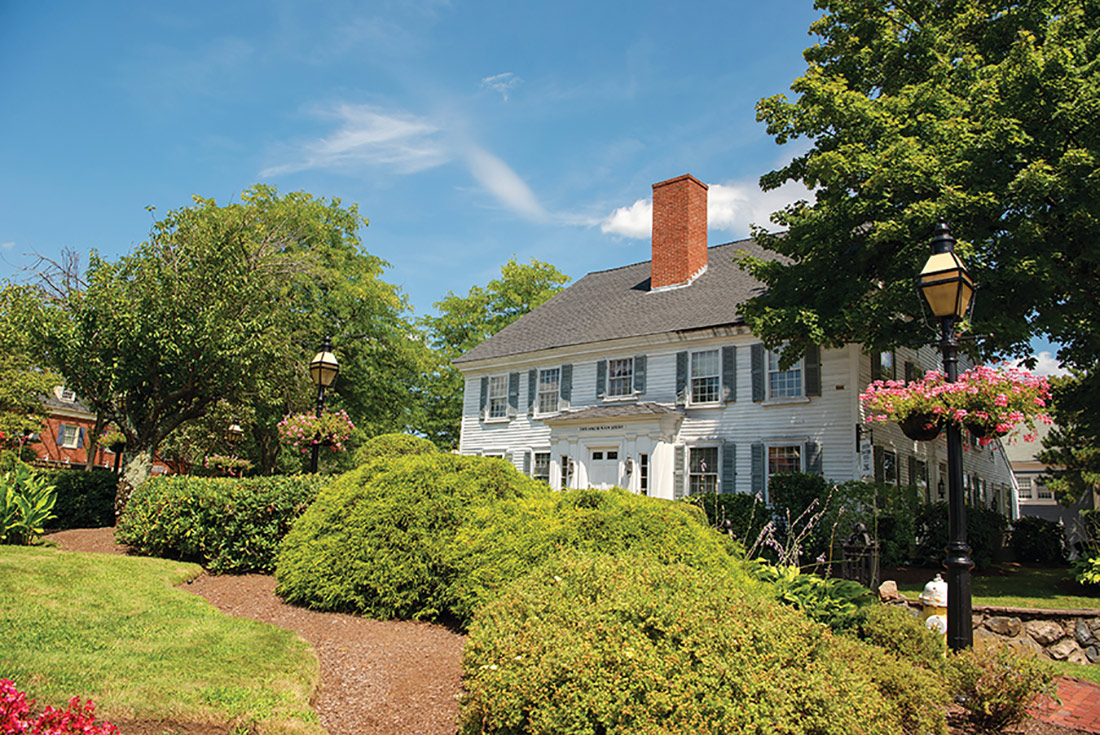
For centuries, Middleton—literally a “Middle town” between larger and more prominent surrounding communities—has been a place to simply drive through for people who don’t live there. But pulling off of busy Route 114 and into the town library’s parking lot or one of its side streets might reveal a different perspective.
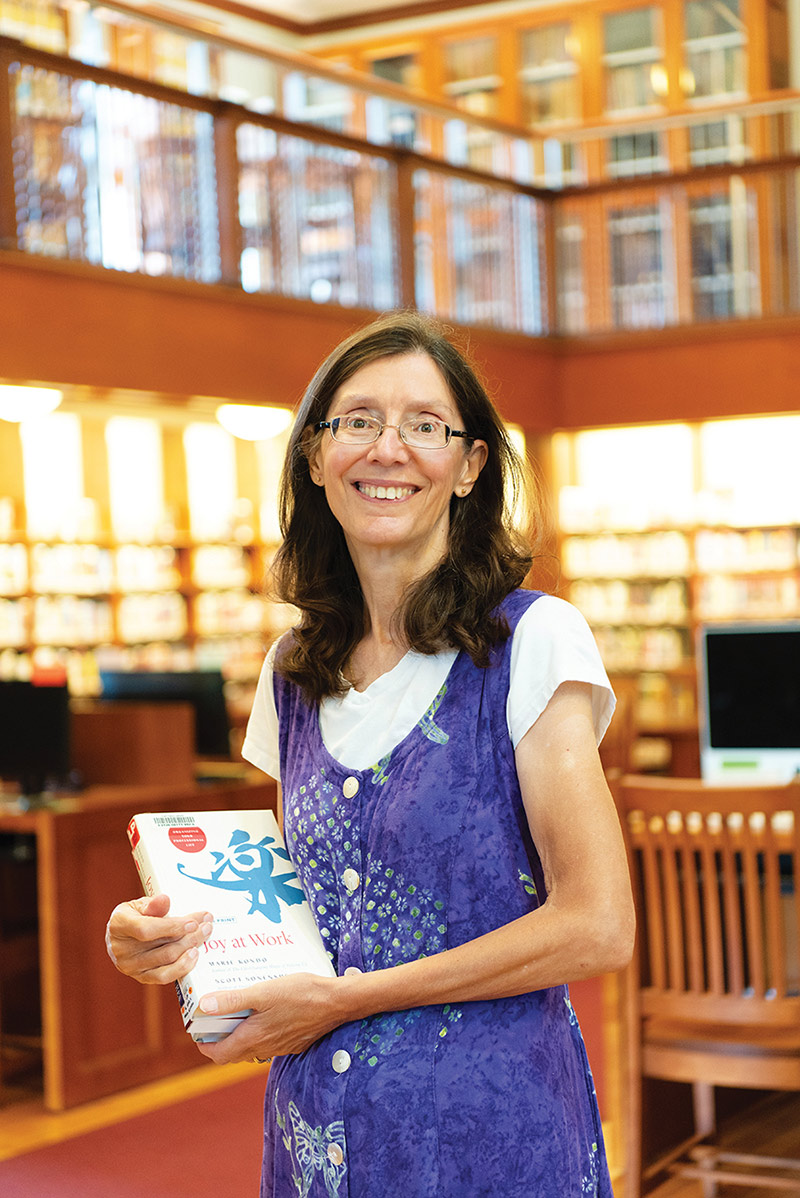
“It is the nicest town I’ve ever worked in, and there’s such a positive feeling in this town,” says Melissa Gaspar, director of Middleton’s Flint Public Library. “It has a small-town feel, even though we have 114 roaring down the middle of the town.” People like to park at the library and walk a loop through Middleton Square that includes a stroll around nearby Middleton Pond, she adds.
The Flint Library is the literal and figurative heart of Middleton Square, a place where people come together not only for books, research, reading, and library events, but also for town and community gatherings.
“People often say the library is the community center,” says Gaspar.
That’s stayed true even during the COVID-19 crisis, when the library’s services and programs had to evolve, including story hours, STEM programs, crafting programs, and discussion and writing groups. “Our patrons have just, for the most part, followed us online,” Gaspar says “You really feel like you are basking in this positive place.”
Residents and others can also use the Internet to explore Middleton Square beyond the library, thanks to a virtual walking tour that Gaspar is working on for Essex National Heritage Area’s annual Trails & Sails event in September.
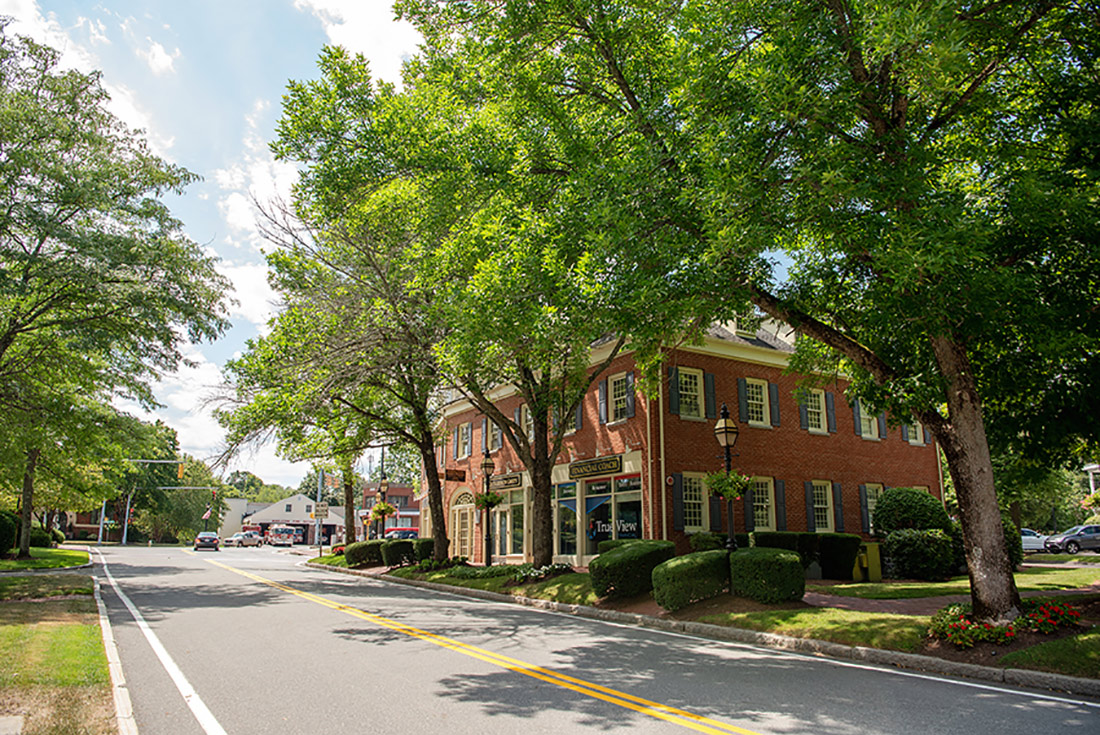
The virtual tour will show people the library, as well as the historic Estey Tavern, and the historic Tramp House, one of the few so-called tramp houses still standing, which were built after the Civil War to give people riding the rails from town to town looking for work or food a place to spend the night. Unlike many tramp houses, Gaspar says Middelton’s was unusually nice, made of brick and containing a little potbellied stove. It just goes to show that Middleton has a long history of being welcoming and kind.
“There’s just a very friendly atmosphere in Middleton,” she says.
Emerson Park, Peabody
Photographs by Elise Sinagra
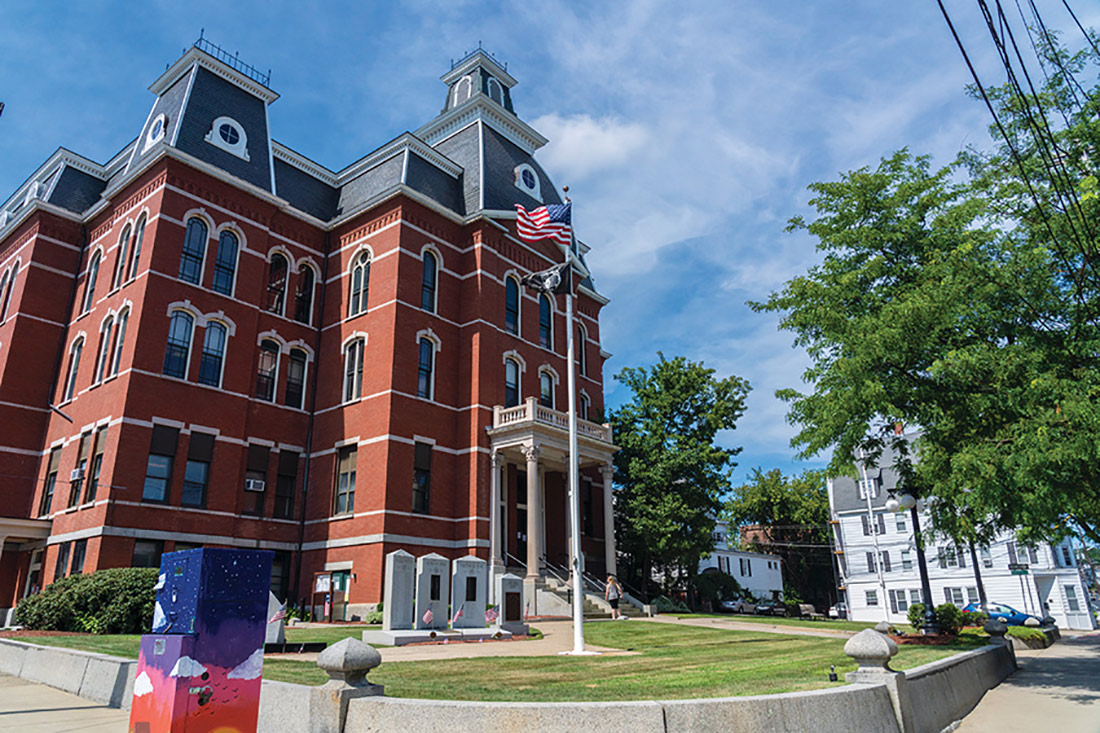
Peabody’s Emerson Park neighborhood is one that Chris Ryder, chief of staff for Peabody mayor Ted Bettencourt, describes as being “right out of a Norman Rockwell painting,” with its friendly neighbors and outside spaces for gathering and playing, including a skate park and ball fields.
The neighborhood, which centers on Emerson Park, has also had a “renaissance” in recent years, Ryder says. There’s the new Higgins Middle School, which opened in 2016; Coach Bob Driscoll’s Old Time Skating Rink, an outdoor rink that opened in 2017; the Peabody Dog Park, which opened in 2018; and a Peabody Public Safety Memorial, which was dedicated in 2017.
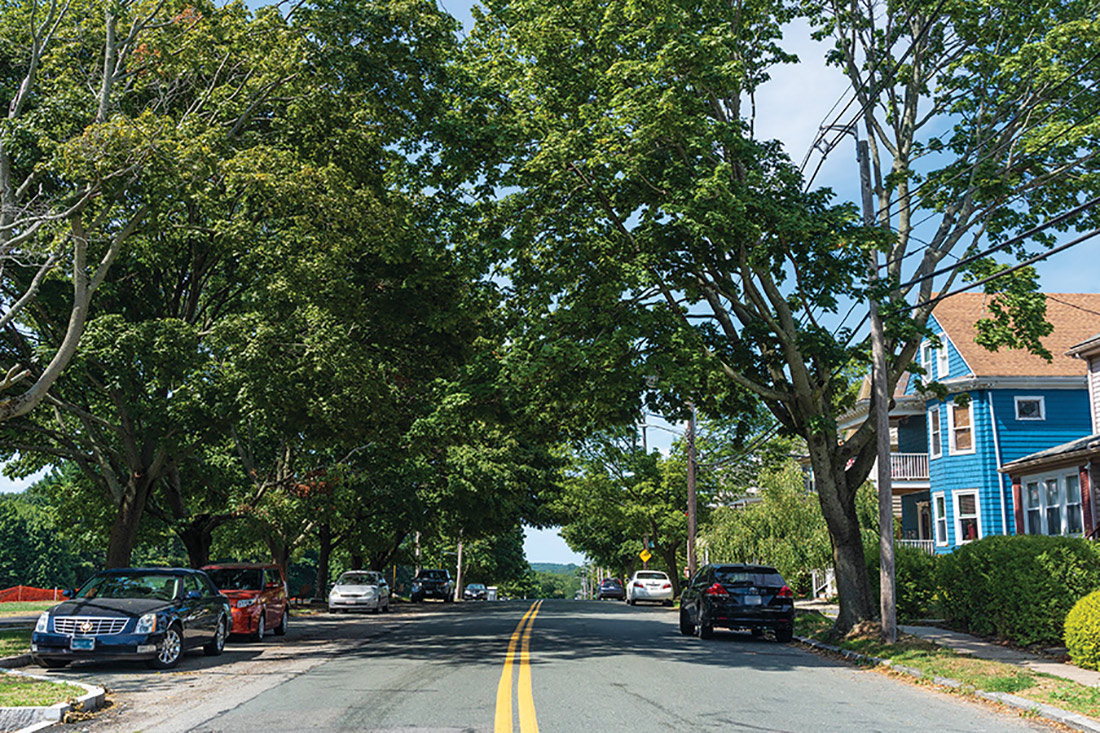
In addition, the city received nearly $400,000 in state funding in the form of a Complete Streets grant, which allowed it to build a multi-use path that runs from the middle school to Emerson Park, as well as reconstruct sidewalks, add new wheelchair ramps, install new crosswalks, and add signage.
“The finishing touches are being added now,” Ryder says.
And the renaissance continues. Ryder says the city is in the beginning stages of an Eco-Recreational Campus Connectivity Plan for the neighborhood that aims to “encourage an increased usage of the bikeways, walkways, and trail networks as well as improving access to the recreational amenities,” according to city’s plan.
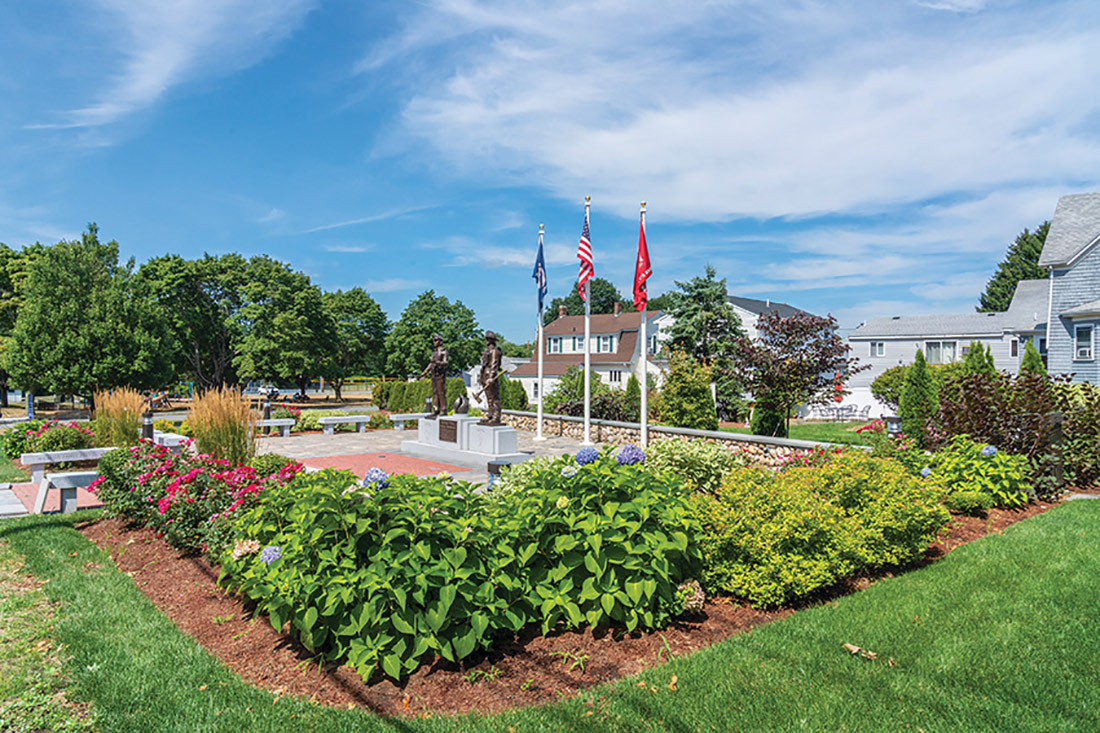
It’s all intended to increase options and access to the kinds of outdoor activities that Ryder sees all the time in this neighborhood: kids playing basketball and skateboarding, friends chatting on the benches, and people doing yoga in Emerson Park. “This particular area brings a cross section of our city together,” he says. “There’s something for everybody.”
